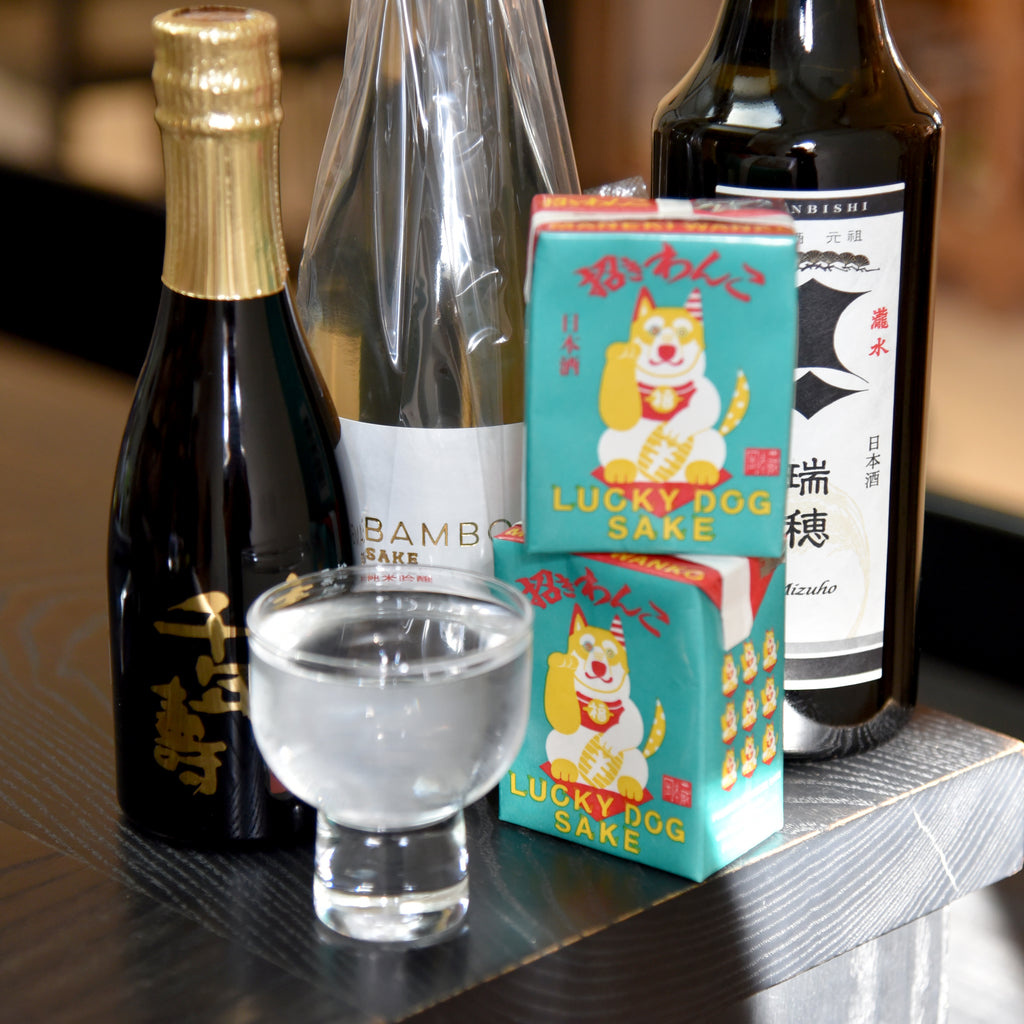 Sake Gumi is our monthly sake subscription service with 200 members throughout the country. Join today!
Sake Gumi is our monthly sake subscription service with 200 members throughout the country. Join today!
Considering that sake is made of 80% water, it is no wonder why almost every brewer we visit obsesses over the quality of their water. This month, we zero in on the most famous water for sake-making: Miyamizu.
Miyamizu is a portmanteau of the words Nishinomiya (a city neighboring Kobe in Hyogo Prefecture) and mizu (water). It refers to the water that was originally collected from Nishinomiya Shrine. The source of the water comes from the Mt. Rokko range in the northern part of Kobe’s Nada area. Miyamizu is harder than most water in Japan, meaning it contains more minerals. It is especially fit for brewing sake because while it is high in desirable minerals that promote healthy yeast growth and fermentation (phosphorus, potassium, calcium, and salt brought from the sea), it is low in iron (iron can lead to off-flavors and colors, especially when aging). Miyamizu accumulates a high mineral content because it is filtered from millions of years of sea shell deposits that the underground water runs through.
Owner Masataka Shirakashi of Kenbishi Brewery (who makes Mizuho for Level 2) says, “The benefits of Miyamizu were proven in 1840. The sake made in the breweries in Nishinomiya City were highly evaluated, and the water used in those breweries was transported to other breweries and used in other breweries to improve the quality of the sake there. As a result, Miyamizu became known to be suitable for making sake.” Since then, the Nada district remains the largest sake-producing area in Japan – all thanks to Miyamizu and its desirable qualities for making sake.
So how does sake made with Miyamizu taste and why has it been so prized since 1840? Hironobu Kubota, Vice president of Fukuju Brewery in Kobe says, “It produces a dry taste with a rich flavor and sharpness.” Shirakashi-san of Kenbishi Brewery adds, “You can make sake with a strong umami flavor. Miyamizu also has the effect of suppressing offensive odor that tends to occur during storage.” Indeed, all the sakes for this month have sturdy umami and age well, harkening the old era of sake before the ginjo boom. These sakes are great for the hearty food pairings we start to indulge in as we head into the fall – like shellfish, red meat, and cheese.
Kanpai,
Yoko, Co-Founder + Sake Director at Umami Mart


Goka Sennenju Junmai Daiginjo
Tatsuuma-Honke Brewing (Hyogo, Japan)
Seimaibuai: Yamada Nishiki 50%, SMV: +0, Acidity: 1.4
A luxurious creamy texture of custard is complemented by notes of dried mango and apricots. It features the signature Miyamizu finish – mineral forward and crisp. Hironobu Kubota, vice president of the brewery suggests having this sake with dishes full of umami to enhance the apricot notes of the sake. He suggests roast beef, or beef with mustard. I also enjoyed it with a chickpea salad. Sip this sake chilled in a Bordeaux-shaped wine glass.

Maneki Wanko “Lucky Dog”
Oka Brand (Hyogo, Japan)
Seimaibuai: Hitomebore 70%, SMV: -10, Acidity: 1.5
This sake, packaged in an irresistible juicebox, is bursting with stewed cherries, cooked rice, and grapes. Level 1 members get a little bonus this month as you will get two boxes of this Lucky Dog. This sake is a bit sweeter – a departure from the textbook Miyamizu style sake that usually has a dry finish, but still has the signature umami-rich profile. The sweetness is perfect for spicier dishes like Thai spicy basil chicken or tofu, or Japanese-style ebi-chili. Have it straight out of the box with the straw chilled or in a white wine glass.

Bamboo Junmai Ginjo
Kobe Shushinkan Breweries (Hyogo, Japan)
Seimaibuai: Local Rice 60%, SMV: +2, Acidity: 1.3
This junmai ginjo that’s been aged for four years, retains vibrant flavors of pineapple, apricot, and yellow nectarines, while offering a solid foundation of umami. The Miyamizu water comes through in its satisfyingly clean finish. Kubota-san says, “The use of Miyamizu allows for the expression of a well-balanced flavor with a rich umami taste and a fruity aroma.” He suggests having this sake chilled with dishes that have a creamy consistency to complement its fruity flavors – duck liver terrine, cottage cheese, or a pumpkin tart.

Kenbishi Mizuho Yamahai Junmai
Kenbishi Sake Brewing (Hyogo, Japan)
Seimaibuai: Yamada Nishiki 70%, SMV: +1, Acidity: 2
Founded in 1505, Kenbishi has the oldest trademarked logo in Japan, representing male and female, and the birth of life. Brimming with notes of honey, raisin, banana, vanilla, and cocoa, this sake has an unmistakable golden glow and ends with crisp acidity. Shirakashi-san of Kenbishi says, “Mizuho blends sake that have been stored for two to eight years and has a very wide range of pairings, as it does not get in the way of any dish.” Try this sake at room temperature with a creamy brie cheese, mushrooms sauteed in butter, or with a grilled filet of salmon.




Comments (0)
There are no comments for this article. Be the first one to leave a message!